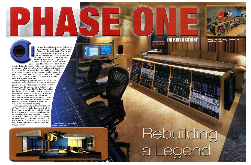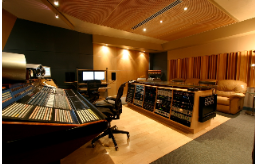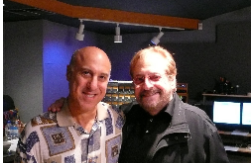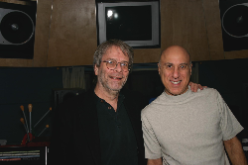Add Text Here...
Three generations of Phase One ownership, spanning almost fifty years. Paul Gross, left .... Mike Smith, centre .... Barry Lubotta, right.
Let's go back to the early days...
In 1974, Paul Gross and Doug Hill wanted to build a world class recording studio in Scarborough, Ontario, a suburb of Toronto. They hired legendary studio builder and speaker designer, George Augsperger to fly in from California, design and build Studio A at Phase One's old location on Kennedy Road. The room and studio quickly became the place to record rock music in the Toronto area, attracting some of the world's best-known artists.
Bob Dylan, Keith Richards, Kiss, Alice Cooper, BTO, Glass Tiger, America and Enrique Iglesias all walked through our doors, with the result being many gold and platinum albums for the world to hear. Paul and Doug had purchased a brand new Neve 8026 recording console in 1974 which added to the allure of Phase One, as it was regarded as the worlds finest.
Phase One was a pretty wild place. It was the 70's, after all, and stories of that period abound. Kiss came in with a large recreational vehicle and were not alone. The buildings swimming pool became a midnight party oasis for many, so much so that the landlord eventually cemented over the entire pool to shut it down. Local bands, such as Glass Tiger were finding international success, and more and more local artists came to record. It was a glorious time, albeit a bit raunchy, the studio put out many albums to international acclaim.
.
.
.
.
.
.
.
By 2000, Paul Gross, then the sole owner (Doug Hill had moved to the US and became involved in computer systems) sold the business to Barry Lubotta, who had previously owned a studio called Pizazzudio on the west side of town. Barry and his team took on the task of modernizing Phase One, which included refreshing Studio A as well as building three new rooms. The new Phase One became an immediate hit, as both local and international artists flocked to the modernized studio. The Barenaked Ladies, Rush, The Tragically Hip, Big Sugar, Jann Arden, The Weekend and many more left their mark. Canadian legend Anne Murray recorded her final three albums at Phase, and Sting was there on a memorable session with Herbie Hancock. Rihanna recorded vocals for one of her best-selling albums, The Black Eyed Peas were in, and Bono came by to do vocals for a movie soundtrack. Phase One was no longer just a rock studio, all sorts of music was welcome. Even musical soundtracks were recorded with full cast members and Catherine Zeta Jones was onsite doing vocal overdubs for the Dreamworks animated DVD, Sinbad.
The studio cleaned up over these years. Smoking inside was prohibited, and yet not many complained. All types of music was being recorded, often in four different studios at the same time. Artists such as 50 Cent and The Game came with their own entourage. Writing camps for Canadian Idol turned Phase into a fully functioning ten room studio for one week a year. Big Screen Hollywood movies, such as The Vow and The Rocker had scenes filmed at Phase one, while female super group En Vogue filmed a Christmas special for TV that still plays every year.
.
.
.
.
.
.
.
.
.
.
.
.
.
In 2017 Barry decided to retire and Phase One closed its doors. The buildings's owner wanted to rent the space to an existing tenant who already had units on either side of the studio. Thus ending the 43 year stretch at the same location. Regardless of this, Phase One was not fading away.
Engineer and technical guru Mike Smith had an idea. He wanted to open a new Phase One at a more desirable nearby location, with modern built studios. He also wanted to take with him the very essence that had made Phase One unique, so his idea of recreating the studios at a new location included removing the 1974 cedar wood off the walls and reinstalling it at the new studio. He also used the in-wall insulation, mic panels, speaker monitoring, cloth finishing materials, doors, furniture, producer desks, and the very same floor to ceiling cylindrical diffusers that adorned Studio A's live floor. He brought much of the original equipment over as well, including the legendary Neve 8026. Many of Phase One's gold records earned over 48 years now adorn the walls of the new studio.
The new premises were built with the purpose to largely recreate the original studios at Phase One. After all, the original Phase One was more than four decades old at the time and there had been huge advances in studio design.
The rooms at the new Phase One are constructed to a higher, more modern standard, with better isolation, quieter booths, multiple production rooms and better build quality. The result are rooms that sound true and linear, translating music faithfully to the outside world.
Phase One's legacy continues, unique and different from the past, but with real ties to the legacy of the original studio. It's not just the name that is shared between the three owners, much of the original studio has been transplanted and has become a part of the new studio; vintage materials and building blocks mixed in with modern amenities. Phase One has always been a world-class studio, now it is built in a way that will allow it to continue this way for years to come.










